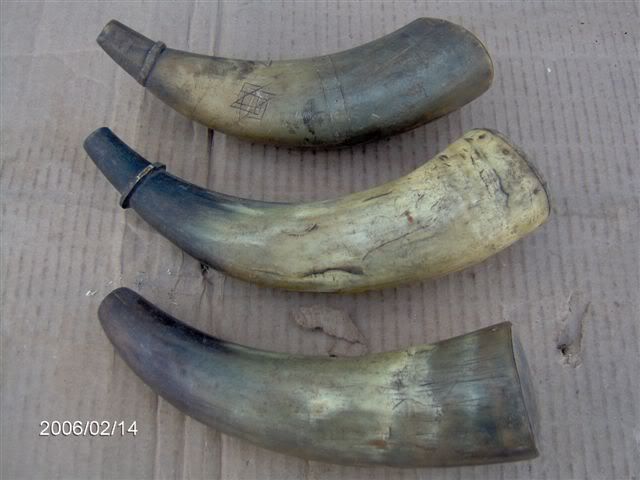jbwilliams3
45 Cal.
- Joined
- Dec 23, 2006
- Messages
- 689
- Reaction score
- 159
Howdy, folks. Let me first say that I have been eating up the information on this forum for the past year. I haven't had to really ask questions because they've all been answered thoroughly somewhere in past threads!
My question is, what natural horn colors would have been available to 18th century Virginians or other Easterners?
I made my first horn out of one of those cheap, highly-polished BLACK horns most likely from India. It's what I had available so I altered it as appropriately as I could. I like it enough since I put work into it. But were black horns ever available in these parts?
I have a raw horn laying around that I plan on making useable the next time I get an afternoon free. This horn is GREY. I think it will make a pretty swell powder horn, but again I don't know about the color. I will post pictures of all my gear for critique whenever I get my digital camera working.
Finally, when I get a hold of a light colored horn, I'm going to have to decide whether or not to "age" it. I love the antique stain coloring, but how long it would take for a horn to naturally take on this hew? My buddy's father has a couple horns he's been hunting and trekking with for nigh on thirty years, and it's still nothing like the yellow or orange I see on a lot of "antiqued" horns.
My question is, what natural horn colors would have been available to 18th century Virginians or other Easterners?
I made my first horn out of one of those cheap, highly-polished BLACK horns most likely from India. It's what I had available so I altered it as appropriately as I could. I like it enough since I put work into it. But were black horns ever available in these parts?
I have a raw horn laying around that I plan on making useable the next time I get an afternoon free. This horn is GREY. I think it will make a pretty swell powder horn, but again I don't know about the color. I will post pictures of all my gear for critique whenever I get my digital camera working.
Finally, when I get a hold of a light colored horn, I'm going to have to decide whether or not to "age" it. I love the antique stain coloring, but how long it would take for a horn to naturally take on this hew? My buddy's father has a couple horns he's been hunting and trekking with for nigh on thirty years, and it's still nothing like the yellow or orange I see on a lot of "antiqued" horns.






